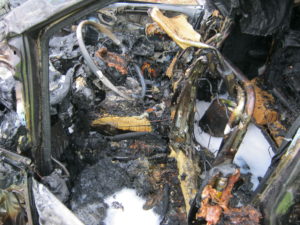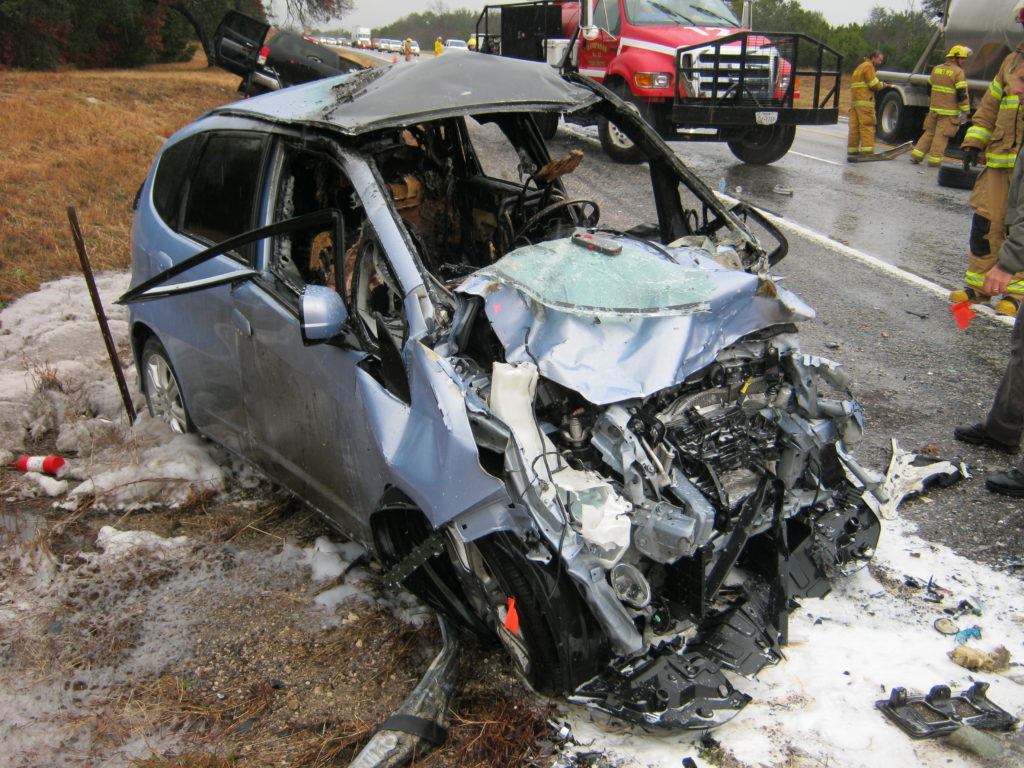
Manager’s comments in Texas deposition might feel familiar to some shops
By onBusiness Practices | Education | Repair Operations | Technology
Auto body shop owners, managers and technicians across the country might want read the deposition of a Texas dealership collision center’s director and take a look in the mirror.
John Eagle Collision Center is being sued for more than $1 million after an acknowledged failure to follow Honda’s OEM roof replacement procedures allegedly contributed to the intensity and injury of a subsequent crash.
The dealership’s law firm did not respond to a message for comment. In an answer to the initial version of the lawsuit, John Eagle Collision said some combination of the Seebachans, another party (presumably the other driver) or the accident itself were responsible for what happened. It also argued that the couple’s pre-existing and subsequent conditions and failure to mitigate their situation could be to blame for the outcome.
The July 7 deposition of John Eagle Collision manager Boyce Willis unfortunately seems to present examples of some of the mindsets collision repair experts, leaders and educators are trying to eliminate from the industry. It’s possible he meant to express different sentiments than what’s able to be conveyed in the print medium of a court transcript.
But what seems to come across to a reader doesn’t reflect well on his shop or the industry, and other collision repairers who recognize themselves in these passages and possible sentiments might want to treat the shop’s experience as a wake-up call — before they find themselves on the receiving end of such grilling.
(Editor’s note: All highlighting in the hyperlinked documents was done by plaintiff’s counsel.)
A shop doesn’t have to follow OEM repair procedures if the insurer says otherwise?
Q. Do you agree that as the voice of John Eagle Collision Center, that when someone takes their vehicle to your certified body shop to be repaired after a vehicle collision or hail damage, that people trust that the body repairs will be performed according to the vehicle manufacturer’s repair specifications?
A. Yes. According to the insurance company.
Q. But at the end of the day, I mean, you have — John Eagle Collision Center has to comply with the vehicle manufacturer’s repair specifications, correct, sir?
A. Correct. …
A. Well, unfortunately we’re guided by insurance.· So — the — if you brought your car into my shop, right, the insurance company’s going to dictate what — how we’re going to repair your car.
Q. I understand. But the — but you — your — as a certified body shop, you have to — you — the — the insurance company cannot trump the OEM specifications, correct, sir?
A. Yes, they can.
Q. Where does it say that?
A. By not paying the bill.
Rejecting OEM repair procedures?
Q. And they tell you, regardless if it’s Honda Motor Company, Ltd. or American Honda Motor Company, Inc., they all — both of those entities put out repair guidelines for body repairs, correct?
A. Correct.
Q. And tell me what the name of any American Honda Motor Company, Inc. body repair document that authorizes repair facilities like John Eagle Collision Center, that authorizes them to use adhesive to glue a new roof back on a 2009 to 2013 Honda Fit.
A. There is none.
Q. So John Eagle Collision Center chose on its own to use adhesive to glue back a roof — a new roof on a 2010 Honda Fit?
A. Yes. …
Q. So John Eagle Collision Center, they made a conscious decision to use adhesive to glue this roof in place?
A. Yes. …
Q. This is the — the OEM, Honda Motor Company, Ltd., is telling John Eagle, you better follow this, right?
A. Well, they don’t tell you you better follow it, but it’s — it’s a guide to repairing a car.
Q. It’s the — it’s the body repair bible, right?
MR. REESE: Objection to form.
A. Supposedly, yes.
Not reading OEM procedures before a repair?
Q. All right. Did (the technician) know about Exhibit 202?
A. He has — he has access to it.
Q.· Where do you have access to —
A. Through the parts department.
Q. Do you have a hard copy of the 2009 to 2013 Honda Fit Body Repair Manual?
A. No
Q. Is it just an electronic version?
A. Yeah, you’ll go into the parts department and they’ll pull it up on the Honda net.
Q. Did (the technician), did he pull up the 2009 to 2013 Honda Fit Body Repair Manual?
A. No.
Even though the OEM built the car, the shop’s opinion is equally valid?
Q. Would you agree with me that Honda Motor Company, Ltd., as the vehicle manufacturer of the 2010 Honda Fit, that they know a bit — they know the safest way to repair their vehicles?
A. Yes.
Q. They’re the experts in safety of vehicles?
A. Yes. …
Q. Is the 3M 8115 an approved item?
A. No.
Q. … Who approved 3M 8115 for use on Honda vehicles, specifically the 2009 to 2013 Honda Fit?· Who approved it?
A. Are you talking about as a manufacturer or —
Q. I — at the collision center.· Because no one at Honda has approved the 3M 8115 product to be used.
A. That would be the collision center.
Q. Who at the collision center approved it? Who did that?
A. Back in 2012, it would have been (Willis’ supervisor). …
Q. Well, had (the supervisor), had he worked at Honda Motor Company, Ltd.?
A. No.
Q. Had he worked at American Honda?
A. No.
Q. Had he worked at any vehicle manufacturer?
A. No.
Q. Was he a — was he — did he have a degree in mechanical engineering?
A. No.
Q. Did he have a degree in metallurgy?
A. No.
Q. Did he have a degree in structural analysis?
A. No.
A shop knows how to fix a car better than an OEM?
Q. OEM —
A. That’s the way they want their cars. But the market’s changed, process has changed, and —
Q. I understand that may be the case. But at the end of the day, John Eagle says that, We’re going to comply — we’re going to build your vehicle back and repair your vehicle back to the way the OEM specifies, right?
A. Bonding is better than welding.
Q. I understand you feel that way, but —
A. I know that way.
Q. Okay. Well, specifically, though, John Eagle tells you on their website that, We will produce your vehicle and put it back to —
A. OEM specs —
Q. — the OEM specs —
A. — or better.
Q. And the OEM specs specifically state for the 2009 to 2013 Honda Fit that it’ll be welded, correct?
A. That’s what Honda states.

If a collision repairer has a lot of experience in the industry, their opinion outweighs an OEM’s?
Q. Right. Now, what specific testing have you seen on the 2009 to 2010 [sic] Honda Fit body where there was adhesive? On that vehicle.
A. I’ve not seen any testing.
Q. All right. Show me — has anyone from John Eagle Collision Center seen any testing on the 2009 to 2013 Honda Fit where adhesives were used but welding was not?
A. Have not seen any testing. But we have had cars that are both bonded and welded that the roofs come aloose. That’s —
MR. TRACY: Objection; nonresponsive.
Q. (BY MR. TRACY) My question is very specific, sir. I —
A. I’m just telling you my — from where I stand, we do over 400 cars a month. I see all types of repairs, whether it’s bonded or welded.
Because some OEMs do a particular repair, the procedure transfers to another OEM’s cars?
Q. And no one at John Eagle has personal knowledge on whether or not a vehicle whose roof has been glued on with adhesive will comply with Federal Motor Vehicle Safety Standards, correct?
A. I would kind of object to that. We work on more than just Hondas at that body shop.
Q. I understand. But let’s just talk solely about Honda right now.
A. Well, it’s kind of hard to stop at one manufacturer, when you have other manufacturers that all you do is bond every panel that’s on the car.
Q. I understand. I mean, for example, like you’re talking about Aston Martin?
A. Yes. We’ve been Aston Martin certified since 2000.
Q. But you’ve got to remember, Aston Martin’s a little bit — they use different material, they use different materials, correct?
A. It’s still adhesive — structural adhesive.
Q. But their body frames are completely different, aren’t they, sir? For example, their megapascals are completely off the charts compared to a Honda frame, correct?
A. That, I don’t know about, megapascals or —
Q. Well, for example, would you agree with me that a Tesla or an Aston Martin, their body structure, their body configuration is made completely different than a Honda Fit?
A. Yes.
Q. All right. So you’ve got to compare apples to apples.
As the deposition shows, it seems extremely easy for an attorney to decimate any position that doesn’t involve following OEM auto body repair procedures. Read the deposition, think about your own rationale for doing what you do in your shop, and mull over how well you think you and your practices would fare in the witness seat.
More information:
Tracy Law Firm via PR Newswire, July 24, 2017
Honda OEM repair procedures portal on OEM1Stop
Images:
This 2010 Honda Fit burned following a collision with a hydroplaning 2010 Toyota Tundra. (Provided by Tracy Law Firm via PRNewsFoto)
